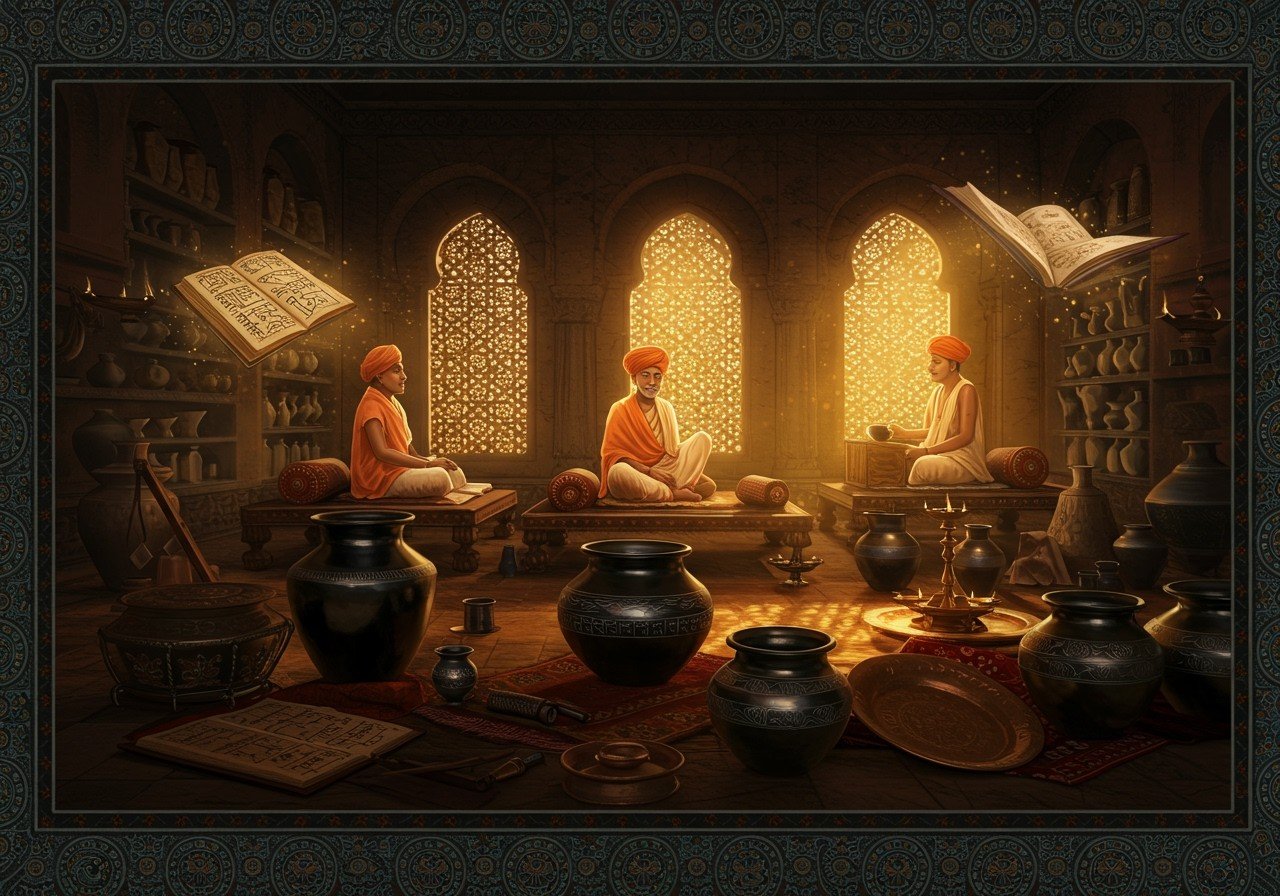
Northern Black Polished Ware (NBPW) stands as a testament to ancient India’s sophisticated craftsmanship and thriving trade networks. This distinctive pottery, known for its lustrous black or grey surface, offers valuable insights into the socio-economic and cultural dynamics of the Mauryan period (322-185 BCE) and beyond.
The Significance of NBPW
Emerging around the 6th century BCE and continuing into the early centuries CE, NBPW showcases the technological prowess of ancient Indian artisans. Its sleek finish, achieved through specialized firing techniques, distinguishes it from other pottery of the time. NBPW’s importance lies in its connection to urbanization, economic prosperity, and cultural practices.
- Urbanization and Economic Prosperity: NBPW is often found in urban centers, indicating its association with flourishing cities and economic growth.
- Trade and Exchange: The widespread distribution of NBPW suggests extensive trade routes and vibrant economic exchanges across ancient India. This indicates a complex and well-established trade system.
- Daily Life and Rituals: NBPW was used in both domestic and ceremonial contexts, revealing its integral role in daily life and religious practices. Its presence in various settings speaks to its versatility and importance in ancient Indian society.
NBPW Culture and the Mauryan Period
The Mauryan period represents the peak of NBPW production and distribution. This era, marked by the reign of Emperor Ashoka, witnessed significant urban development and cultural exchange. NBPW thrived in this environment, becoming a symbol of the empire’s prosperity and interconnectedness.
- Urban Planning and Architecture: NBPW is often discovered alongside evidence of advanced urban planning, such as drainage systems and fortified structures. These findings highlight the sophistication of urban life during this period.
- Social Hierarchy and Luxury: NBPW artifacts are sometimes found with luxury items, offering a glimpse into the social hierarchy and the lives of the elite. The presence of such items suggests a stratified society with varying levels of wealth and status.
- Funerary Practices: The discovery of NBPW in burial sites sheds light on funerary customs and beliefs in ancient India. This suggests that NBPW held symbolic meaning beyond its practical uses.
NBPW and Ancient Cities
NBPW is closely linked to several prominent ancient Indian cities, including Pataliputra (the Mauryan capital), Taxila (a center of learning and trade), and Kaushambi (a significant urban hub). The prevalence of NBPW in these cities underscores their importance as centers of craft specialization, economic activity, and cultural exchange.
Women’s Roles and NBPW
The presence of NBPW in domestic contexts provides valuable clues about the roles of women in ancient India. Women were likely involved in producing, using, and maintaining NBPW pottery. This suggests their active participation in craft specialization and household management. As mentioned in historical texts, women in ancient India held diverse roles, from scholars to householders, highlighting the complexities of their lives.
Much like the skilled artisans of ancient India who crafted NBPW, Poojn.in offers a wide selection of high-quality ritual items for your spiritual practices. Enhance your connection to India’s rich cultural heritage with authentic products from Poojn.in.
- Ritual Items: Camphor Tablets, Candles, and Ghee are essential for various ceremonies. Poojn.in offers a convenient way to acquire these items.
- Traditional Ingredients: Harad, a traditional ingredient used in various rituals, is available at Poojn.in. Explore our collection for more authentic ingredients.
- Textiles for Rituals: Just as NBPW played a crucial role in ancient rituals, traditional textiles like sarees continue to be significant in modern ceremonies. Poojn.in offers a selection of pure cotton sarees ideal for ceremonial use.
Conclusion
Northern Black Polished Ware serves as a window into ancient India’s rich history and cultural heritage. Its presence in archaeological sites across the country reveals a story of technological innovation, economic prosperity, and complex social structures. By studying NBPW, we gain a deeper appreciation for the ingenuity of ancient artisans and the vibrant cultural tapestry of ancient India. Explore more about Indian culture with our articles on Ramayana Characters and Life Lessons and Dharma in the Ramayana.


